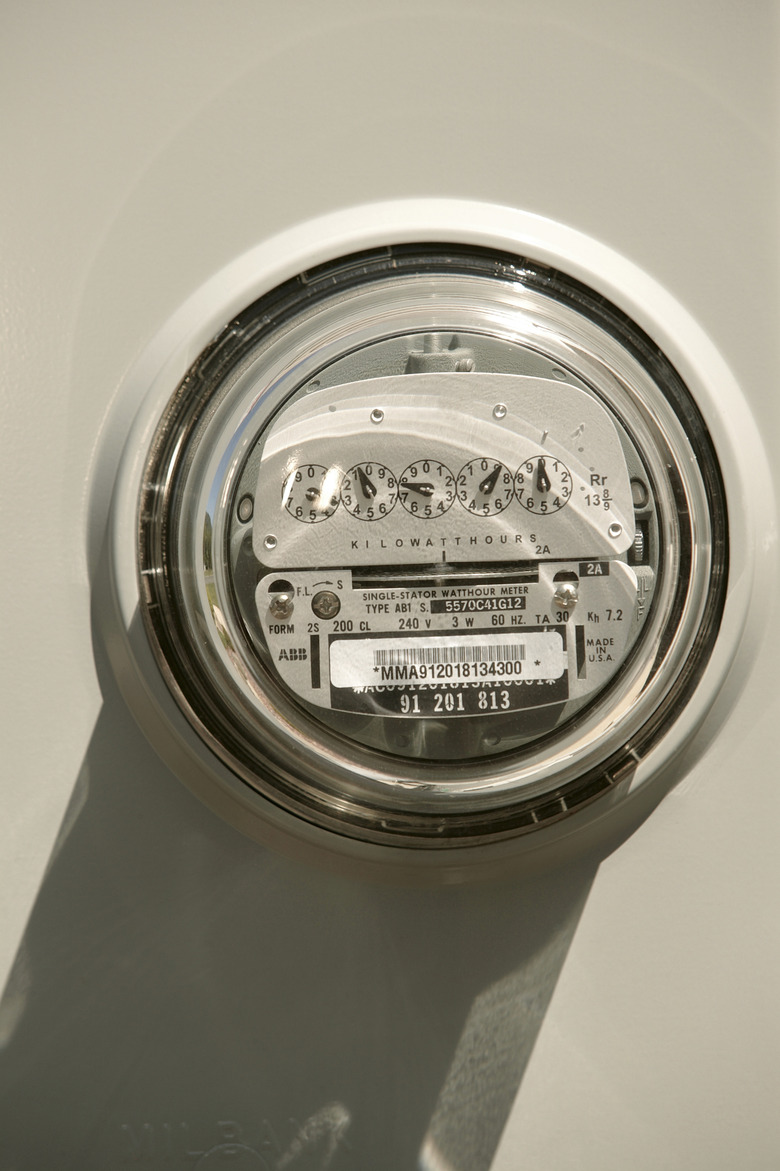Watt Hour Vs. Amp Hour
Electricity carries energy that you can measure in several different ways. Power, the rate at which equipment uses energy, is expressed as units called watts. The total amount of energy used over time is watt-hours. Amperes, or amps, measure current, the flow of electric charge. Volts measure its force. Amp-hours measure a battery's electrical storage capacity, assuming its voltage stays constant.
Watts and Watt-Hours
Watts and Watt-Hours
Virtually all equipment and appliances have power consumption ratings in terms of watts. A 15-watt fluorescent lamp, for example, consumes electric power at a slower rate than a toaster with a 1,000-watt rating. Watts multiplied by hours gives watt-hours, a measure of total energy consumed over time. If you run the 1,000-watt toaster for five minutes, that is one-twelfth of an hour times 1,000 watts or 83.33 watt-hours. If you leave the 15-watt fluorescent lamp on for six hours, it is a total of 90 watt-hours — more total power consumed. Your electric meter measures kilowatt-hours, or units of 1,000 watts an hour. To make the meter advance by one unit, the appliances, lights and electronics in your house consumed 1,000 watt-hours of energy.
Amp-Hour
Amp-Hour
Alkaline batteries in AA, AAA, C and D cell sizes all produce the same voltage fresh out of the package: about 1.5 volts. The batteries differ not only by size, but also by capacity: the larger the battery, the greater its current capacity. For large batteries, this is measures in amp-hours; for small batteries, it is milliamp-hours. If a D cell battery has a capacity of 12,000 milliamp-hours and you use it in a 200-milliamp flashlight, the battery lasts 60 hours. Used in a smaller, 50-milliamp flashlight, the battery lasts 240 hours.
Watt-Hours for Batteries
Watt-Hours for Batteries
Battery manufacturers rate batteries in amp-hours as a convenience; they could just as easily rate them in watt-hours. For example, a 1.5-volt D cell battery of 12,000 millamp-hours stores a total of 18,000 milliwatt-hours, or 18 watt-hours of energy. Watt-hours acknowledges a battery's voltage and amp-hours ignores it. As long as your units are consistent, either measure will work.
Changing Voltage
Changing Voltage
Your electric meter measures kilowatt-hours instead of kiloamp-hours because household appliances consume power in two voltages: 110-volt and 220-volt. Kilowatt-hours takes into consideration both the voltage and the current used. Battery ratings in amp-hours work because a battery's voltage stays fairly constant as a device consumes its power.
References
Cite This Article
MLA
Papiewski, John. "Watt Hour Vs. Amp Hour" sciencing.com, https://www.sciencing.com/watt-hour-vs-amp-hour-12135955/. 24 April 2017.
APA
Papiewski, John. (2017, April 24). Watt Hour Vs. Amp Hour. sciencing.com. Retrieved from https://www.sciencing.com/watt-hour-vs-amp-hour-12135955/
Chicago
Papiewski, John. Watt Hour Vs. Amp Hour last modified March 24, 2022. https://www.sciencing.com/watt-hour-vs-amp-hour-12135955/
